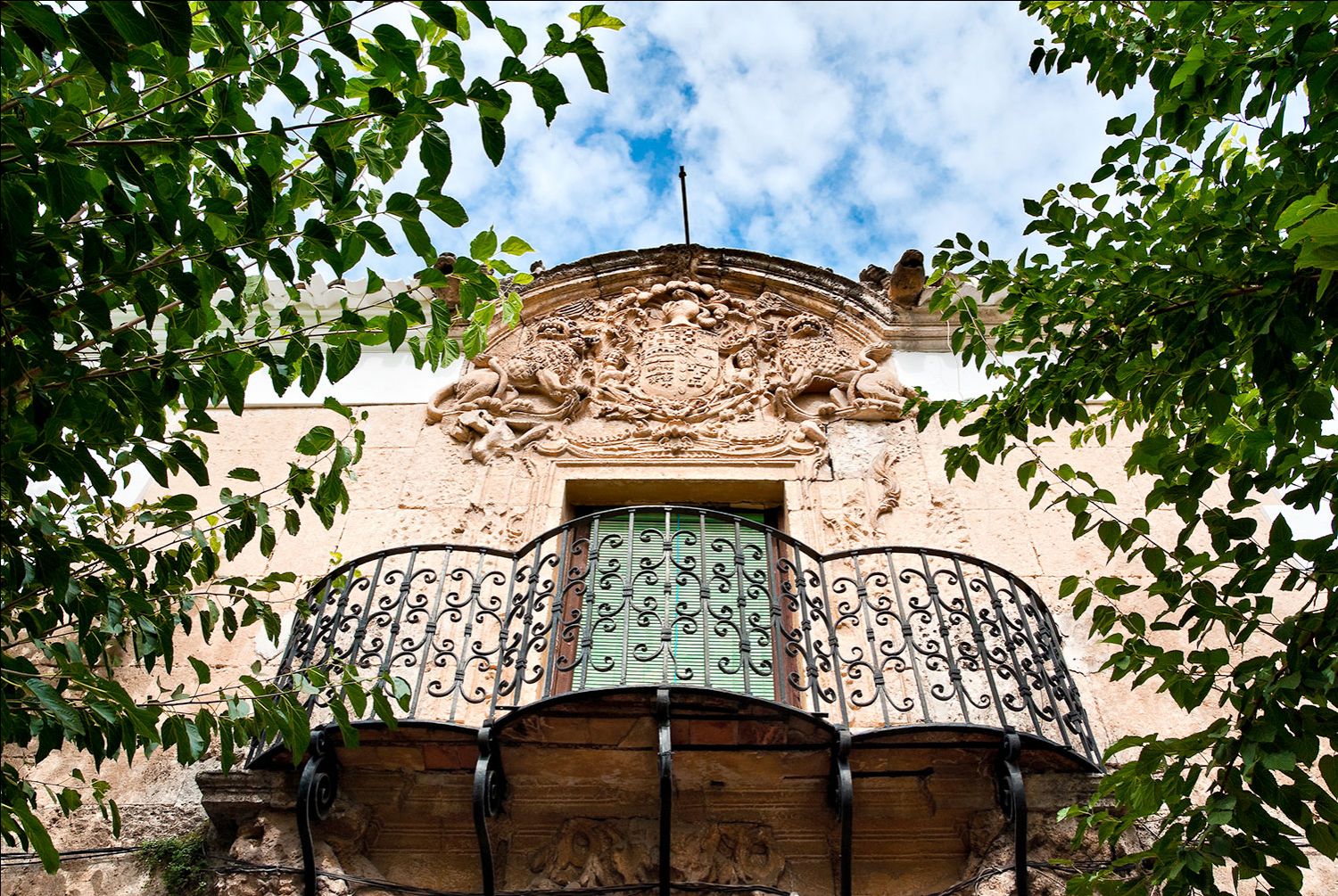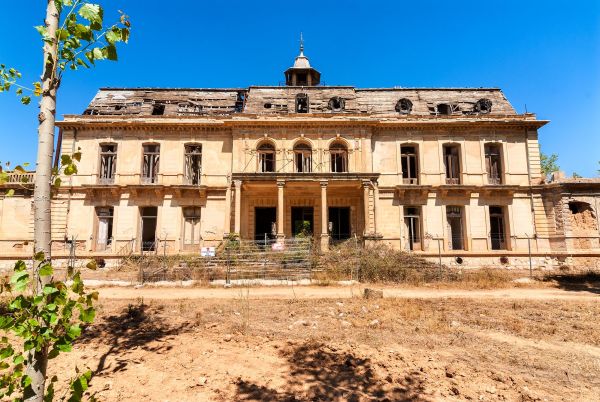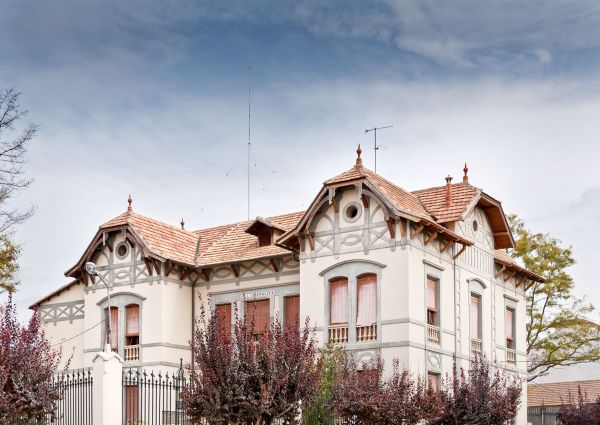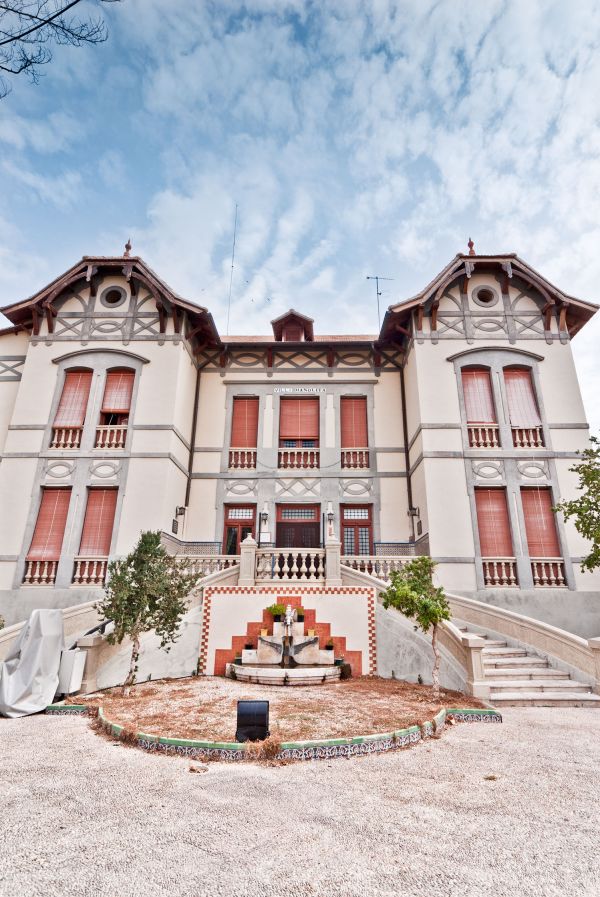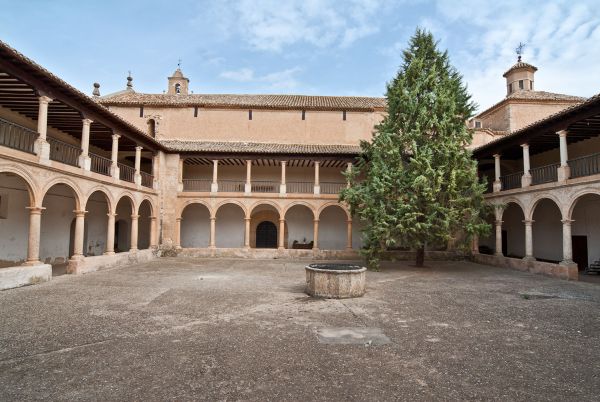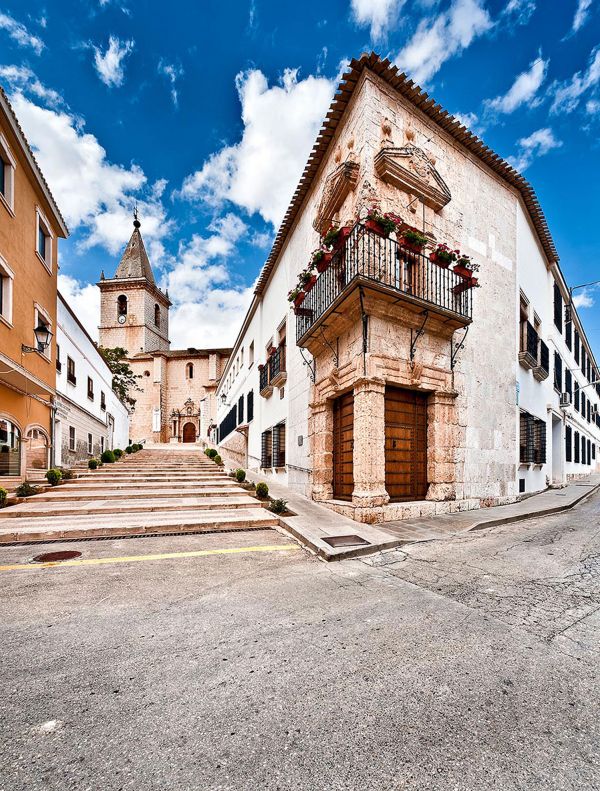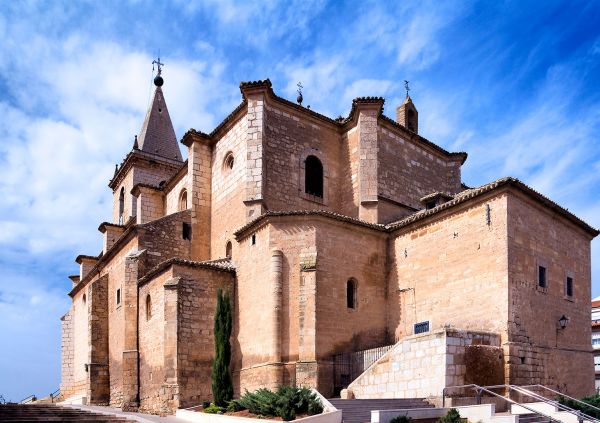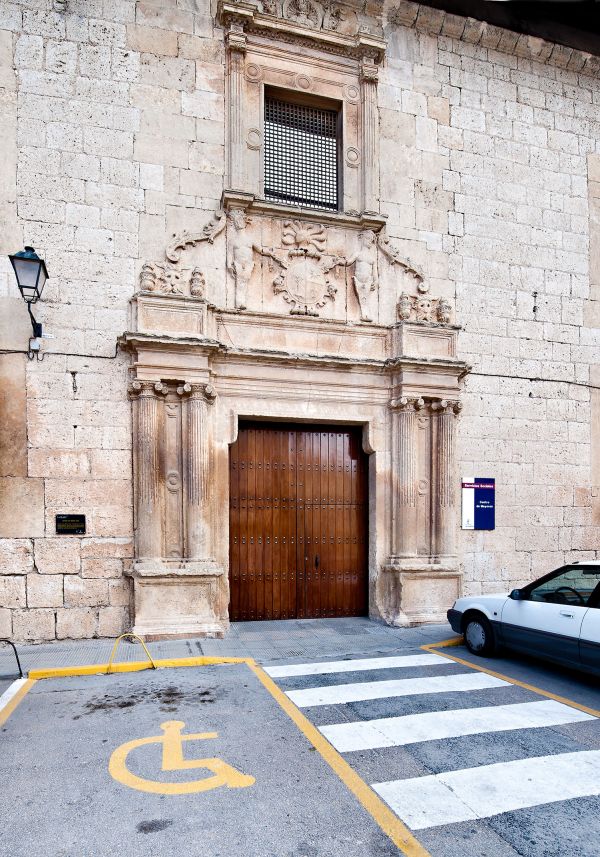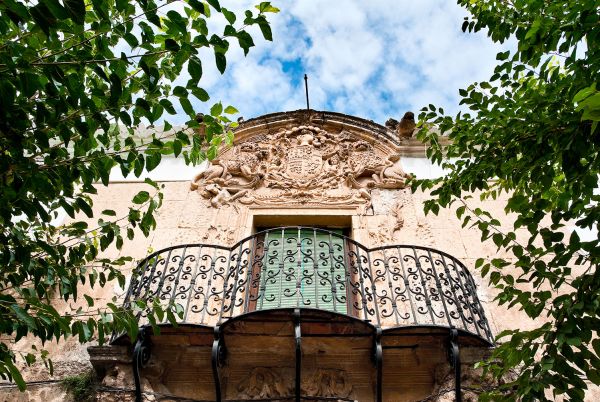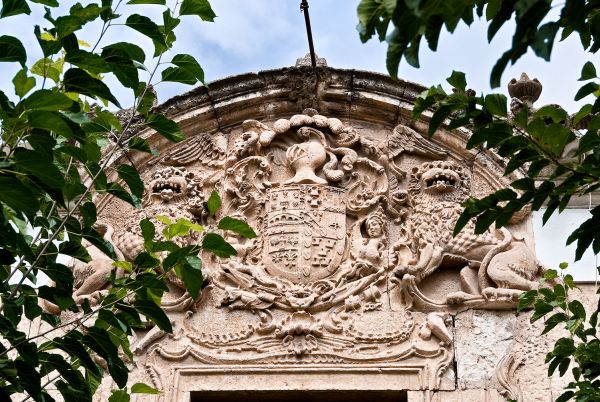La Roda, Fuensanta and a Versaillesque palace
Albacete, Cuenca
The origin of this town’s name comes from its role as a halfway house for the old routes connecting Complutum to Carthago–Nova in the Roman times; or the silk road joining Toledo with Valencia and Cartagena. It is with good reason that locals called the town centre zone Miliaria, a tradition that gives the impression there was a thousand-year-old stone or milestone there that marked the distance in miles on a Roman road. As a good student of so many peoples and cultures, La Roda has been able to absorb the best of each, and this is evidenced in its beautiful urban whole, declared an Asset of Cultural Interest due to its historic and artistic value.
Streets such as Calle Pedro Carrasco stand out, with its clear La Mancha style, and the stately homes. There is a route called the coats of arms via doorways (and their coats of arms) that tells us the story of La Roda residents in recent centuries. The Inquisitor's House or the Atienza House stand out. Here, the Pérez de Oviedo family resided in the second half of the 16th century with a beautiful, Plateresque doorway; the Sotos House, the different coats of arms of the lineage of Rojas, Carrasco and Ortiz R. de Arellano, the Escobar family, the de la Torre family, etc. The list is long!
The Doctor de la Enzina Palace, with the coat of arms on the doorway, is worth admiring. It has a marvellous porticoed patio with Tuscan columns that support the wooden roof. The palace belonged to Doctor Fernando de la Enzina, a canon in Cuenca cathedral and ahead of his time, as he was a passionate art and culture lover.
The Palace of the Countess of Villaleal, declared an Asset of Cultural Interest, stands out due to its beautiful rococo doorway and the dome decorated with glass tiles.
The construction known as Lienzo de Doña Ana (now a centre for the elderly), was a project to build a large mansion designed in the 16th century by Pedro Carrasco Barnuevo and his wife Ana Ramírez de Arellano Ortiz y Villaseñor. However, only the large canvas on its façade was built in stone due to Pedro’s sudden death. It the distinct style of the Alcaraz architect Andrés de Vandelvira.
Among all these civil constructions, the Alcañabate corner is particularly eye-catching, a strange Renaissance piece, with its corner-like shape and the layout of its façade, and whose date of execution, 1627, takes the form of a spiral. This façade was originally found in the house located across the road, demolished in 1960 and rebuilt in 1995 by the “La Enzina” vocational school, positioning its ashlars, balcony and coat of arms opposite the original location and if a glass reflection. As a historical footnote, this house was home to the Queen of Spain, Mariana of Austria, widow of Philip IV in 1668.
Above the maze of houses, the town’s most important religious building stands out: the 16th century church of El Salvador, blending Gothic, Baroque and Renaissance styles, with the latter dominating. With three longitudinal and five transversal naves, the church’s highest point is the 26-metre high lantern of the dome. Outside, its beautiful tower, more commonly known as the Beacon of La Mancha, stands out. The remains of a Berruguete altar are preserved in the sacristy.
On the outskirts of La Roda, the road to Fuensanta (15 km away) is perfect for a bike ride. Fuensanta has at least three surprises in store: in the middle of the town, on Calle Huertas, we come across a surprising Arabic arch from the 12th century, built on a flat, rough-cut stone base with a sand and lime mortar layer; and 2 km from the town, the Júcar river provides the perfect spot for recreation, tranquillity and fishing. The roads running alongside the river lead to beautiful spots in Fuensanta such as “La Manchega”, “Quitapellejos” or “Recodo Bello”. The river outlines small meanders bordered by forests of white poplar, dotted with willows and ash trees among other indigenous species where abundant avifauna can easily be seen. The valley slopes are home to vast woods of pines.
Finally, the restaurant and hotel, Villa Manolita is in a magnificent modernist palace built in the early 20th century. In its main patio, the double staircase at the main entrance is noteworthy, with a fountain in the middle of the lower part, giving the façade a stately, 1920s air.
Speaking of palaces, our last stop is the interesting, beautiful and often photographed Gosálvez Palace: a ruined but still impressive building on the banks of the Júcar river, with a French, Versaillesque feel to it, located 12 km from La Roda, near Villalgordo del Júcar, in Albacete province, but belonging to the municipal district of Casas de Benítez, in Cuenca.
For those with a sweet-tooth: La Roda is the birthplace of the famous “Miguelitos”, a sweet known around Spain and found in several shops and establishments in the town.
May also be of interest to you
Castilla-La Mancha Tourism in 2023. All rights reserved.
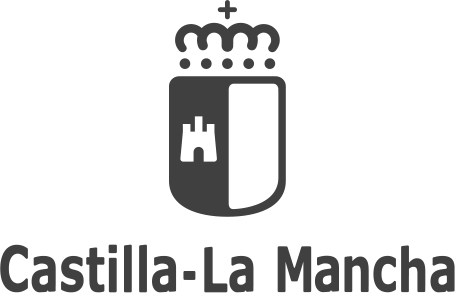
 365
365
